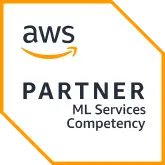Snowflake Data Integration
Transform Data Chaos into Data Precision
Unify and streamline your entire data ecosystem with Snowflake. Effortlessly consolidate data from all your sources and transform it for seamless insights and smarter decision-making.

Home » Services » Snowflake Consulting » Data Integration





Snowflake Data Integration - How to Unlock the Full Potential of Your Data?
Data integration plays a crucial role in maintaining a competitive edge. As businesses collect vast amounts of structured and unstructured data from various sources, integrating this data into a single platform for analysis and insights becomes paramount.
With its cloud-native architecture, Snowflake is revolutionizing data integration by offering seamless capabilities to streamline data workflows and optimize data management. This cloud-based data warehouse has rapidly gained popularity due to its powerful capabilities and flexibility.
One of its key features is its seamless data integration capabilities, enabling businesses to consolidate data from various sources into a unified platform. In this comprehensive guide, we will explore everything you need to know about Snowflake data integration, its key features and benefits, and the different approaches to achieving it.
What is Snowflake Data Integration?
Snowflake data integration refers to the process of consolidating data from various sources into the Snowflake platform. Snowflake provides a highly scalable and secure environment that simplifies data ingestion, transformation, and storage, allowing businesses to integrate and process data in real-time.
Its flexibility allows users to work with multiple data formats, enabling organizations to unlock actionable insights and gain a unified view of their operations.

Key Features of Snowflake for Data Integration
As businesses grapple with growing volumes of data from multiple sources, efficient data integration becomes more pressing. Snowflake, a cloud-native data platform, stands out for its comprehensive capabilities that are designed to simplify and optimize data integration.
From handling structured and semi-structured data to enabling real-time data sharing, Snowflake provides organizations with the tools to streamline workflows and access critical insights. Let’s explore the key features that make Snowflake a powerful solution for data integration:
Cloud-Native Architecture
Snowflake is designed with a multi-cloud architecture, offering integration flexibility across leading cloud platforms like AWS, Azure, and Google Cloud. This cloud-native design ensures scalability, allowing organizations to handle fluctuating data volumes easily.
Support for Multiple Data Formats
Snowflake supports structured, semi-structured, and unstructured data formats, including JSON, Avro, ORC, and Parquet. This flexibility allows businesses to integrate data from different systems, ensuring that all data can be analyzed from a single platform.
Integration with ETL/ELT Tools
Snowflake's ETL/ELT compatibility with leading tools such as Fivetran, Informatica, and Talend allows for streamlined data integration. Whether an organization prefers the traditional ETL approach or the modern ELT (Extract, Load, Transform) method, Snowflake supports both for maximum efficiency.
Data Sharing Capabilities
One of Snowflake's standout features is its ability to enable secure, real-time data sharing. Users can share data with external partners without moving or copying it, providing faster and more secure access to information.

What is the Purpose of Snowflake Data Integration?
The primary purpose of Snowflake data integration solutions is to enable businesses to create a unified data platform that collects, stores, and processes data from different sources. This integration helps break down data silos, ensuring all departments have access to the same real-time information and improving collaboration, decision-making, and operational efficiency.
Snowflake Data Integration Services
Snowflake offers various robust data integration services that allow businesses to manage, transform, and share data seamlessly. From real-time ingestion via Snowpipe to secure data sharing and marketplace integration, Snowflake empowers organizations to break down data silos and enable smooth data flows across systems.
Additionally, with features like data replication, failover, and task automation, Snowflake ensures that businesses can maintain continuous data availability while enhancing operational efficiency. These services make Snowflake an all-encompassing platform for streamlined data integration in today's cloud-first environments, positioning it as a leader among Snowflake consulting partners.
Snowpipe
Snowpipe provides continuous, automated Snowflake integration for data loading, allowing businesses to ingest data in real-time. This is particularly useful for industries like retail and finance, where immediate data insights are crucial.
Data Stream & Task Services
Snowflake’s streaming and task services continuously monitor and update data across the platform, facilitating real-time processing and reporting.
Data Replication and Failover
Snowflake offers automated data replication across regions and cloud providers, ensuring businesses maintain high availability and disaster recovery capabilities.
Data Marketplace Integration
With Snowflake’s Data Marketplace, businesses can easily access and integrate third-party datasets to enrich their analysis. Incorporating external data sources into existing workflows allows for more comprehensive decision-making.
External Tables and Stage Management
External tables allow businesses to query data stored in cloud storage without importing it into Snowflake. This feature is handy for companies with large, static datasets that don’t require frequent updates.

Components of Snowflake Data Integration
Snowflake's data integration capabilities are designed to handle a variety of data sources and workflows, allowing businesses to seamlessly ingest, process, and share data across the enterprise. Below are the core components that power Snowflake data integration:
Snowflake Connectors
Snowflake provides many connectors to facilitate seamless data integration with external systems. These include JDBC, ODBC, Python, and Spark connectors, enabling smooth data ingestion from various sources.
These connectors allow native integration with databases, applications, and third-party services, ensuring a consistent data pipeline without excessive manual intervention.
Virtual Warehouses
Snowflake’s virtual warehouses are compute clusters that allow users to run queries and perform data transformations. These virtual warehouses are elastic and can scale up or down based on workload, ensuring performance efficiency without over-provisioning resources.
They allow businesses to decouple computing and storage, a key advantage when handling varying data integration workloads, such as large-scale ETL jobs or real-time data streaming.
Data Sharing
Snowflake’s unique data-sharing capabilities allow businesses to share live data across organizations in real time without copying or moving data. This can be incredibly useful for collaborative efforts across different departments or with external partners, providing a seamless way to integrate data into analytics workflows without creating data silos.
Snowflake Data Marketplace
The Snowflake Data Marketplace is an ecosystem where businesses can access and integrate third-party datasets directly into their own Snowflake environments.
The marketplace provides ready-to-use datasets for demographic data, market trends, or consumer behavior insights. These enhance a company’s analytics and decision-making capabilities by easily integrating external data.
Data Preparation
Snowflake offers various tools to prepare data for downstream analytics. These include support for semi-structured data formats like JSON and Avro and structured formats like CSV.
Snowflake simplifies data preparation through its flexible schema design and automatic optimization features, such as partitioning and clustering, which streamline data for faster query performance.
Data Migration or Movement and Management
Snowflake’s data integration framework supports efficient data migration from on-premise databases, cloud storage, and other third-party systems.
With built-in tools like Snowpipe for continuous data ingestion and external table management, businesses can move data to and from Snowflake without downtime, enabling seamless data flow between various environments.
Data Warehouse Automation and ETL/ELT
Snowflake is optimized for modern ETL/ELT workflows, supporting traditional and real-time data integration processes. With support for ELT (Extract, Load, Transform) operations, Snowflake lets businesses load raw data into the platform and transform it later, providing greater flexibility and reduced complexity in data integration workflows.
Snowpipe, along with third-party ETL tools like Talend, Fivetran, and Informatica, simplifies the automation of these data pipelines, allowing for continuous data ingestion and transformation.

Integration Approaches in Snowflake
Snowflake supports multiple integration approaches that cater to different data handling needs, enabling businesses to manage data from diverse sources efficiently. The below integration methods use Snowflake's unique architecture and capabilities to offer scalable and flexible data transformation, storage, and analysis solutions:
ETL (Extract, Transform, Load) vs. ELT (Extract, Load, Transform)
While traditional ETL involves transforming data before loading it into the platform, Snowflake's architecture favors the ELT approach, where data is loaded first and then transformed. This allows businesses to use Snowflake’s scalability and processing power to perform transformations more efficiently.
Native Connectors
Snowflake offers native connectors such as JDBC, ODBC, and REST APIs, which enable seamless integration with other applications and platforms. These connectors are essential for syncing Snowflake with different databases and systems.
Data Integration via Snowflake Data Marketplace
Snowflake’s Data Marketplace offers access to pre-curated datasets from external providers. Businesses can integrate these third-party data sources into their pipelines, enhancing data enrichment and analytics capabilities.

Types of Data Integration with Snowflake
When integrating data with Snowflake, businesses can utilize different approaches depending on their data needs, each offering unique performance, scalability, and flexibility advantages.
1. Batch Data Integration
Batch data integration involves collecting, transforming, and loading large data sets at specific intervals. This approach is typically used for historical or non-time-sensitive data and is well-suited for bulk data processing where real-time updates aren't required.
Snowflake supports batch integration through its "COPY INTO" command, which enables users to load large data volumes from cloud storage services like AWS S3, Microsoft Azure Blob Storage, and Google Cloud Storage. This method is highly efficient for scenarios like end-of-day financial reporting, where the data volume is large, but real-time updates are unnecessary.
2. Real-Time Data Integration
Real-time data integration allows businesses to ingest and process data as it is generated. Snowflake supports real-time data ingestion through Snowpipe, a continuous service that automatically loads data from external storage into Snowflake tables.
Snowpipe is designed for real-time analytics and operational reporting, where decisions must be made instantly based on the latest available data. It works by processing data incrementally, thus eliminating the need for large batch loads. This approach to data integration in Snowflake enables instant business decision-making in e-commerce or finance, where real-time insights are critical.
3. Third-Party Application Integration
Snowflake integrates with various third-party applications, allowing businesses to enhance their data ecosystem with external services. Its connectors and integrations support a range of popular ETL/ELT tools, such as Talend, Fivetran, and Informatica, which help automate the data ingestion process.
Additionally, Snowflake provides APIs and native connectors for applications, making it easier to ingest and process data from multiple sources, including CRM platforms, marketing tools, and financial systems. This versatility enables organizations to build end-to-end data pipelines, ensuring their Snowflake environment is well-integrated into the broader IT landscape.

Benefits of Snowflake Data Integration
Snowflake big data integration offers numerous advantages for businesses seeking to streamline their data management and analytics processes. By consolidating data from various sources into a single, scalable platform, Snowflake enhances data accessibility and performance.
Additionally, Snowflake’s architecture supports robust security, compliance, and real-time data sharing, ensuring businesses can efficiently use their data while maintaining governance standards. Key benefits include the following:
Scalability
Snowflake's elastic scalability allows organizations to scale their data pipelines on demand. Businesses can handle massive data workloads during peak times without compromising performance.
Cost Efficiency
Snowflake’s pay-as-you-go pricing ensures businesses only pay for the resources they use, leading to significant cost savings, especially for companies managing large volumes of data.
Simplified Management
Snowflake offers fully managed services, which eliminate the need for manual infrastructure management. This allows data teams to focus on deriving insights instead of maintaining hardware.
Unified Data Platform
Integrating data from multiple sources into a centralized platform, Snowflake simplifies data management, ensuring consistency across departments and improving collaborative decision-making.

Best Practices for Snowflake Data Integration
Following the best practices is essential to making the most of Snowflake data integration and ensuring smooth, scalable operations. The below practices optimize performance, improve security, and effectively address potential challenges:
Optimizing Data Ingestion Performance
Optimizing the data ingestion process is crucial for efficient and fast data loading. Some key strategies include:
- Use Appropriate File Sizes: For Snowflake, data ingestion performs best when file sizes are between 100MB to 1GB. Too small or too large files can cause inefficiencies in the loading process.
- Data Compression: Compressing files (such as using gzip or Parquet formats) reduces storage and improves data transfer speeds during ingestion.
- Parallel Loading: When ingesting large amounts of data, utilize Snowflake’s capability to parallelize data ingestion across multiple virtual warehouses. This approach drastically reduces loading time, especially for large datasets.
Data Governance and Security
Snowflake offers powerful tools for ensuring data governance and security, which are critical when handling sensitive or regulated data.
- Role-Based Access Control (RBAC): Implementing RBAC ensures only authorized personnel can access specific data or tables. This limits potential security breaches and unauthorized data access.
- Data Encryption: Snowflake automatically encrypts all data at rest and in transit, but organizations should enforce encryption policies for sensitive data as an added security measure.
- Data Masking: Snowflake can apply data masking to protect sensitive information like personal identifiable information (PII), making it invisible to unauthorized users while still allowing for analysis.
Handling Large-Scale Data
Integrating and managing large-scale data effectively within Snowflake requires careful planning and architecture.
- Partitioning Data: Organizing data into partitions or clustering columns helps improve query performance by minimizing the number of files Snowflake needs to scan during queries.
- Materialized Views: For large-scale data processing, materialized views can help by precomputing and storing results from frequently queried data sets, improving query speed.
- Data Lifecycle Management: Implementing lifecycle management strategies (like automatically archiving older, less frequently accessed data) can help reduce storage costs and keep the system performant.
Challenges and Considerations in Snowflake Data Integration
While Snowflake offers robust capabilities for data integration, organizations may encounter several challenges that require careful consideration. Integrating various data sources, managing large volumes of information, and ensuring security and compliance can complicate the process.
Additionally, organizations must address data latency issues in real-time scenarios and monitor costs effectively to avoid unexpected expenses. Understanding the challenges below and implementing appropriate strategies is crucial for maximizing the benefits of Snowflake’s data integration capabilities:

Data Latency Issues
In real-time data integration, managing data latency is critical to ensuring the timely availability of data. One common challenge is ensuring real-time streams are processed quickly enough without creating bottlenecks.
Solution
Snowpipe, Snowflake’s auto-ingest feature, is designed to handle real-time data streams with minimal latency. Monitoring queues and scaling virtual warehouses can also help balance workloads and reduce delays.

Cost Management
One of the challenges of cloud-based systems like Snowflake is managing compute and storage costs, especially during large-scale data integration projects.
Solution
Regularly monitor query performance and compute usage to identify inefficiencies. Snowflake’s auto-suspend and auto-resume capabilities allow virtual warehouses to shut down when idle, saving costs on compute resources. Optimizing data storage (e.g., compressing files and archiving older data) can also reduce costs.

Handling Legacy Systems
Integrating Snowflake with legacy or on-premise systems presents challenges, especially regarding compatibility and data transfer speed.
Solution
Use Snowflake's native connectors and APIs to integrate with on-premise systems. Snowflake also supports data migration tools and third-party ETL/ELT tools like Talend or Informatica, which bridge the gap between legacy systems and Snowflake’s cloud-native environment.
Frequently Asked Questions
Which ETL/ELT tools can be integrated with Snowflake?
Snowflake supports popular ETL/ELT tools like Fivetran, Informatica, Talend, and dbt, allowing seamless data integration and automation.
How does Snowflake handle data replication and disaster recovery?
Snowflake offers automatic data replication across regions and cloud platforms, ensuring high availability and disaster recovery capabilities.
Can Snowflake integrate with third-party applications?
Snowflake’s native connectors (JDBC, ODBC) and APIs allow integration with various third-party applications, databases, and data lakes.
Final Words
Snowflake data integration simplifies the complex process of managing and processing data from multiple sources. Its cloud-native architecture, robust scalability, and ability to handle various data formats make it an ideal choice for businesses aiming to streamline their data workflows.
Partner with Folio3 Cloud and Data Services, and they will follow best practices and use Snowflake’s extensive features. With Folio3 Cloud and Data services, organizations can optimize data ingestion, enhance real-time analytics, and experience valuable insights for better decision-making.
Real Results, Real Impact

We have been delighted by canibuild and we have very successfully incorporated the platform into our way of selling. Our New Homes Consultants have embraced the technology and love how it simplifies our sales process. The support from Tim, Jim and the canibuild office has been exceptional and their accessibility to all of our team has helped make the rollout of the platform so much easier.
Simon Curtis
G.J. Gardner Homes
Ready To Talk?
Let's explore your objectives and discover how our Snowflake Integration consultancy can drive your success.
Request A Call
Get in touch with our team to solve your queries.